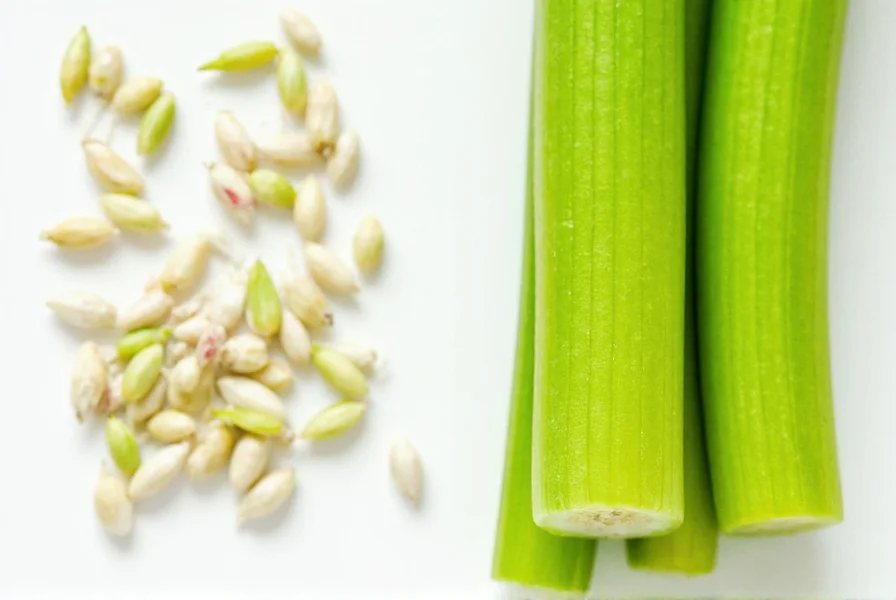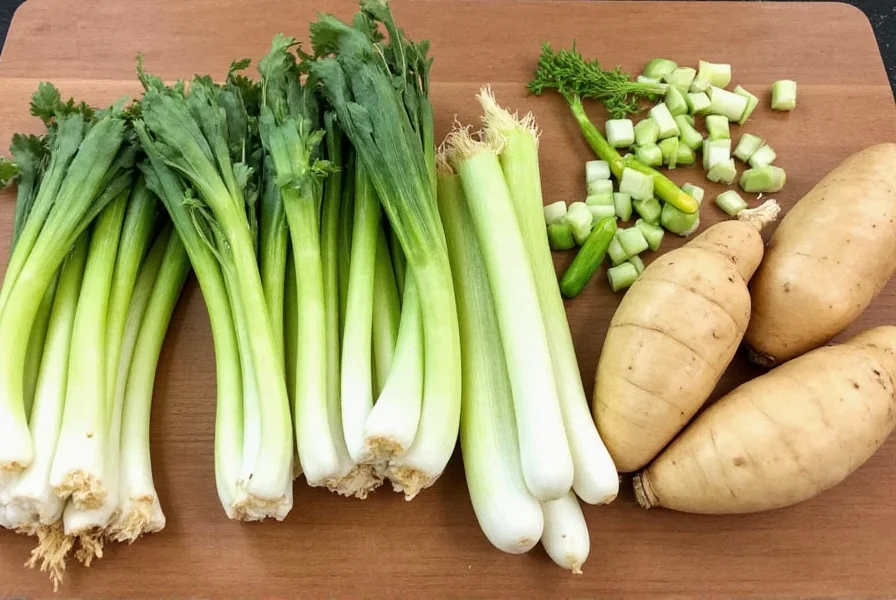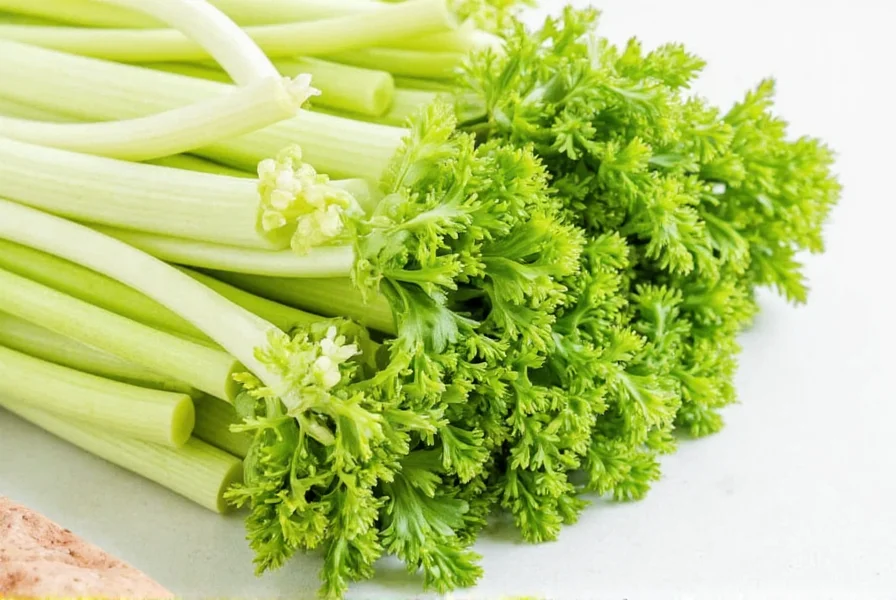Understanding the Celery Seed and Fresh Celery Relationship
Celery seed comes from the fruit of the celery plant (Apium graveolens), specifically from the seed pods of the flowering celery plant. While both originate from the same botanical source, their culinary properties differ substantially. Fresh celery consists primarily of water (about 95%) with mild, vegetal flavors and a distinctive crunchy texture. Celery seed, by contrast, contains concentrated essential oils that deliver an intense, warm, slightly peppery flavor profile.
Flavor Profile Comparison
The flavor difference between these ingredients explains why direct substitution rarely works. Fresh celery offers subtle herbal notes with a refreshing crunch, while celery seed provides a much more assertive, almost spicy flavor with hints of citrus and parsley. Think of celery seed as the "essence" of celery rather than a direct equivalent.
| Characteristic | Fresh Celery | Celery Seed |
|---|---|---|
| Flavor Intensity | Mild, subtle | 8-10x stronger |
| Texture Contribution | Crunchy, watery | No texture |
| Best Used In | Salads, crudités, fresh applications | Cooked dishes, spice blends, pickling |
| Substitution Ratio | 1 stalk | 1/8-1/4 tsp |
Practical Substitution Guidelines
When substituting celery seed for fresh celery, consider both the recipe type and desired outcome. For cooked applications like soups, stews, and braises where texture isn't critical, use these ratios:
- For one medium celery stalk: 1/8 to 1/4 teaspoon celery seed
- For one cup chopped celery: 1/2 to 1 teaspoon celery seed
- For celery-heavy dishes like stocks: Start with 1 teaspoon celery seed per quart of liquid, then adjust to taste
Always add celery seed early in the cooking process to allow its flavors to mellow and integrate. Unlike fresh celery, which loses flavor when cooked too long, celery seed benefits from extended cooking time.

When Substitution Works Well
Celery seed serves as an effective substitute in specific cooking scenarios:
- Cooked dishes: Soups, stews, chili, and braises where texture isn't important
- Spice blends: As part of Old Bay seasoning, celery salt, or homemade poultry seasoning
- Pickling recipes: Where the concentrated flavor complements vinegar-based solutions
- Meatloaf and meatballs: Where celery's flavor matters more than its texture
When to Avoid Substitution
Never substitute celery seed for fresh celery in these situations:
- Raw applications: Salads, crudités, or fresh salsas where crunch matters
- Celery-forward dishes: Celery soup, celery salad, or Waldorf salad
- Recipes requiring celery's moisture: Where celery contributes significant liquid content
- When serving celery as a vehicle: Ants on a log or celery boats
Better Alternatives When Celery Is Unavailable
If you need to replace fresh celery but don't have celery seed, consider these alternatives based on your recipe:
- Fennel bulb: Similar crunch with mild anise flavor (use 1:1 ratio)
- Bunching onions or leeks: For savory depth in cooked dishes (use 3/4 cup chopped leeks per cup celery)
- Parsnips: For soups and stews (use 1:1 ratio, adds slight sweetness)
- Cucumber: For raw applications requiring crunch (use 1:1 ratio, more watery)

Professional Chef Tips for Working with Celery Seed
Experienced cooks maximize celery seed's potential with these techniques:
- Toast before use: Lightly toast seeds in a dry pan for 1-2 minutes to enhance flavor
- Grind for even distribution: Use a spice grinder for uniform flavor in sauces and dressings
- Balance with acid: Counter celery seed's intensity with lemon juice or vinegar
- Combine with complementary spices: Pair with mustard seed, dill, or thyme for complex flavor profiles
Understanding Celery Seed's Role in Global Cuisines
Celery seed appears prominently in various culinary traditions, which informs smart substitution practices. In Indian cuisine, it features in garam masala blends, while Scandinavian cooking uses it in pickling solutions. Mediterranean recipes often incorporate it into vegetable preserves. Recognizing these traditional uses helps determine when celery seed can effectively replace fresh celery in international dishes.
Frequently Asked Questions
Can I use celery seed to replace celery salt in recipes?
Yes, but adjust for salt content. Replace 1/4 teaspoon celery seed plus 1/4 teaspoon salt for each teaspoon of celery salt. Remember that celery salt contains about 75% table salt, so the substitution requires careful balancing to avoid over-salting your dish.
How much celery seed equals one stalk of celery in soup?
For soups and stews, use 1/8 to 1/4 teaspoon of celery seed to replace one medium celery stalk. Start with the smaller amount, then taste and adjust after 15-20 minutes of cooking. The concentrated flavor of celery seed develops slowly, so it's better to under-season initially.
Why does my dish taste bitter when I substitute celery seed for celery?
Celery seed becomes bitter when used in excessive amounts or added too late in the cooking process. The bitter compounds need time to mellow—always add celery seed early in cooking and use no more than 1/4 teaspoon per cup of liquid. If bitterness occurs, balance with a small amount of acid (lemon juice) or sweetness (a pinch of sugar).
Can I substitute fresh celery for celery seed in a recipe?
Yes, but you'll need significantly more fresh celery to achieve similar flavor intensity. Use approximately 8-10 stalks of chopped celery to replace 1 teaspoon of celery seed. This works best in cooked dishes where the celery can break down and release its flavor, but won't replicate the distinctive warm notes of celery seed.
Does celery seed have the same nutritional value as fresh celery?
No, celery seed and fresh celery have dramatically different nutritional profiles. Celery seed contains concentrated minerals and essential oils but lacks the hydration and fiber of fresh celery. One tablespoon of celery seed contains about 25 calories and significant amounts of calcium and magnesium, while one cup of chopped celery has only 16 calories but provides dietary fiber and vitamin K.











 浙公网安备
33010002000092号
浙公网安备
33010002000092号 浙B2-20120091-4
浙B2-20120091-4